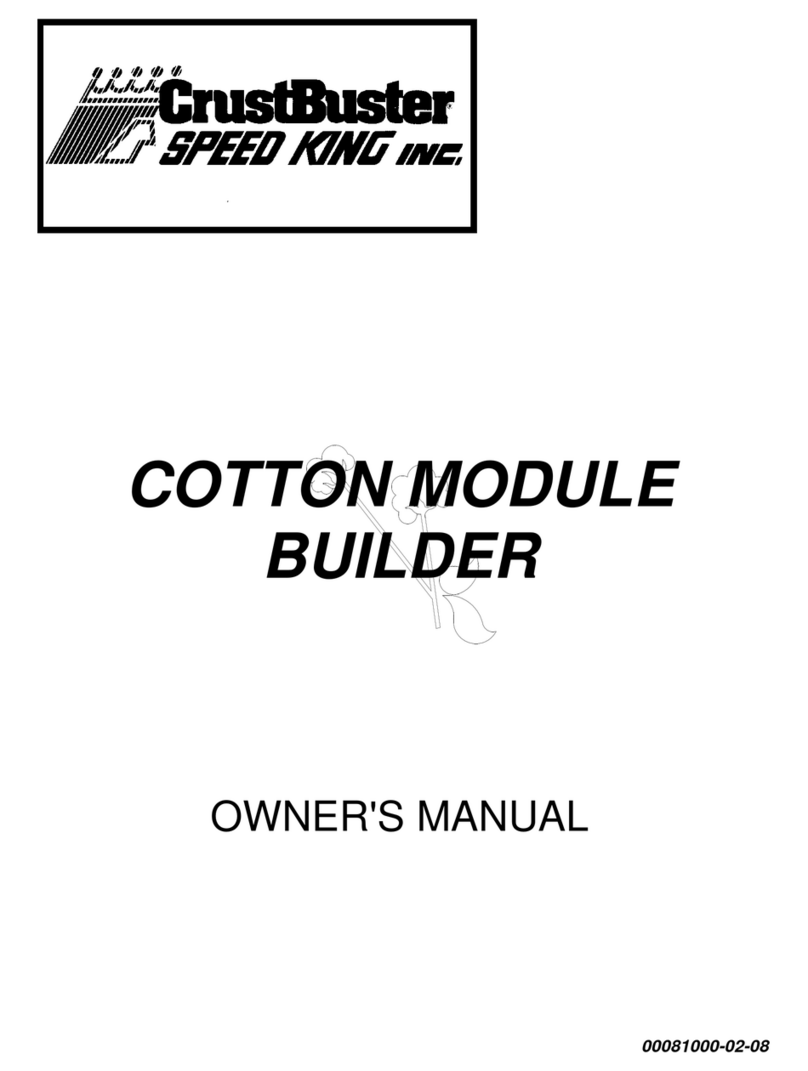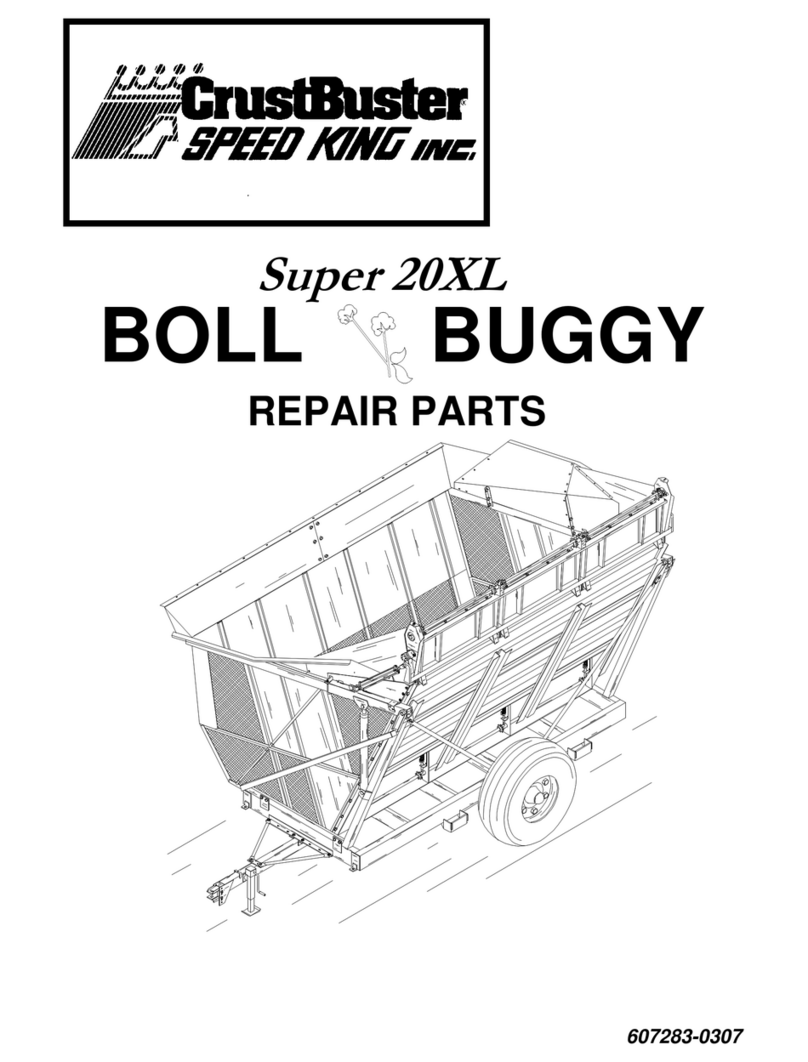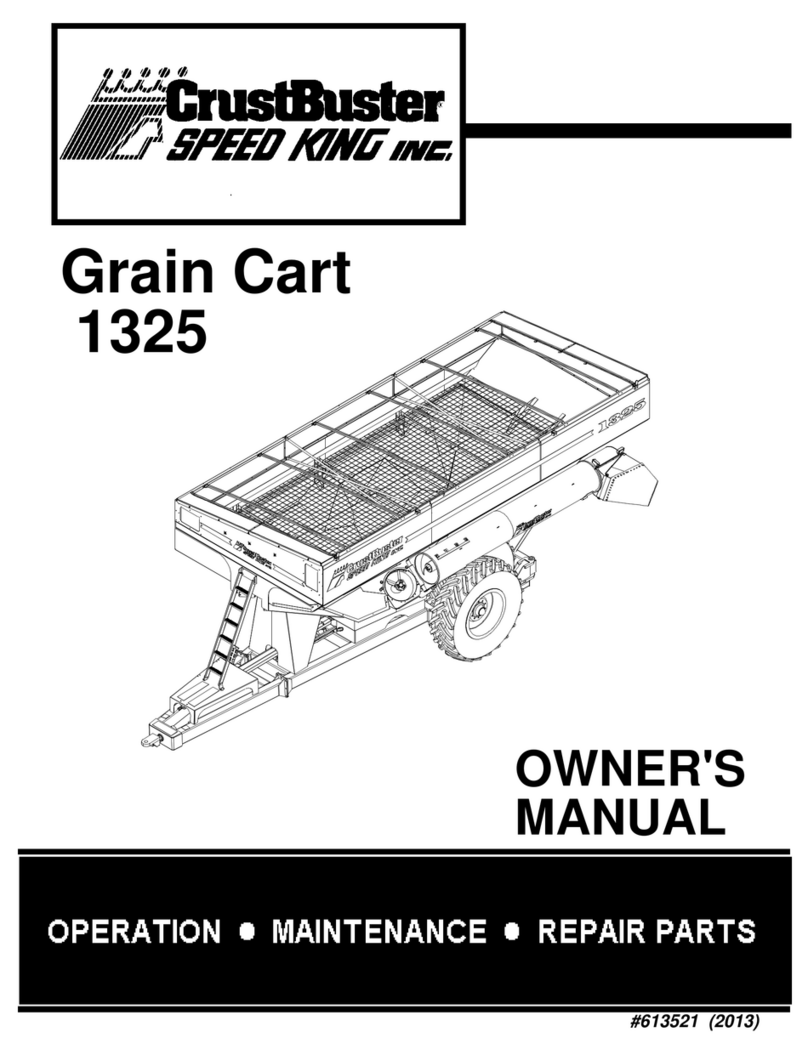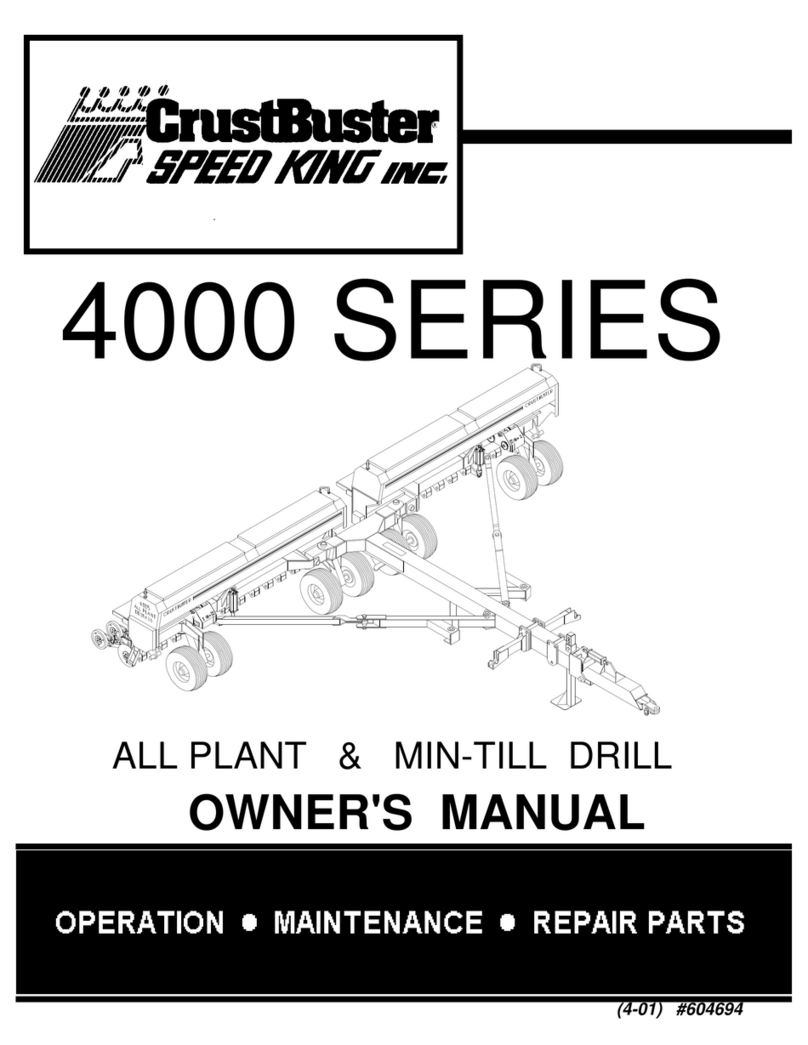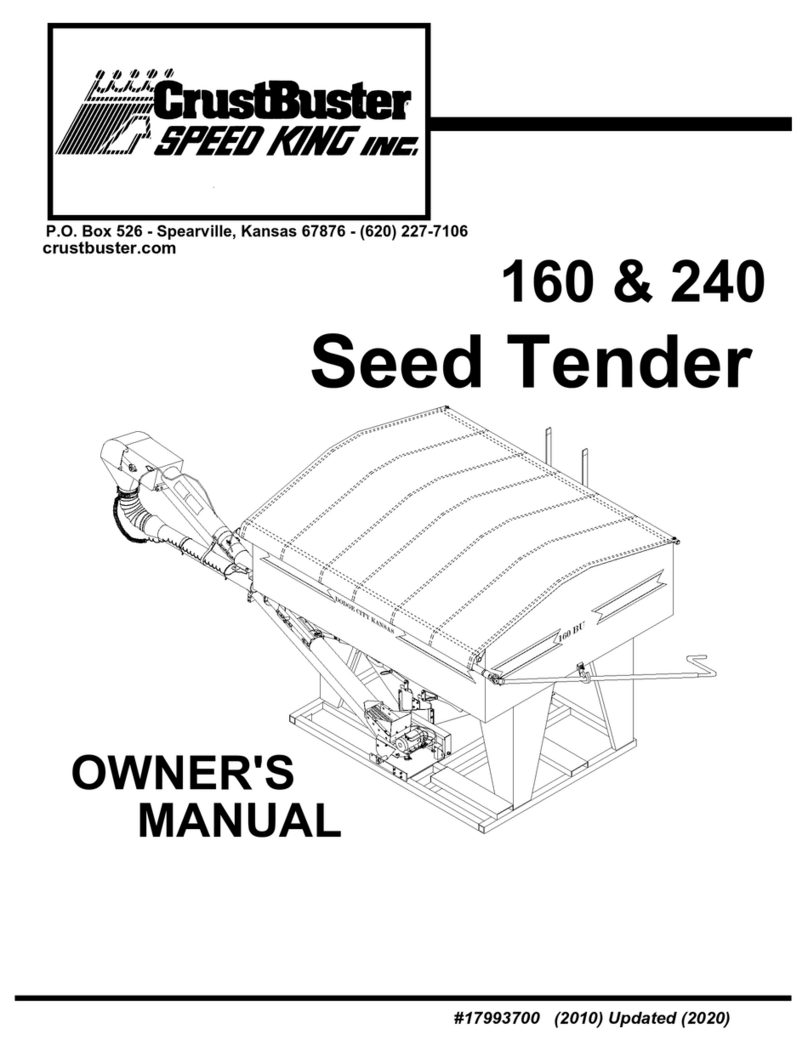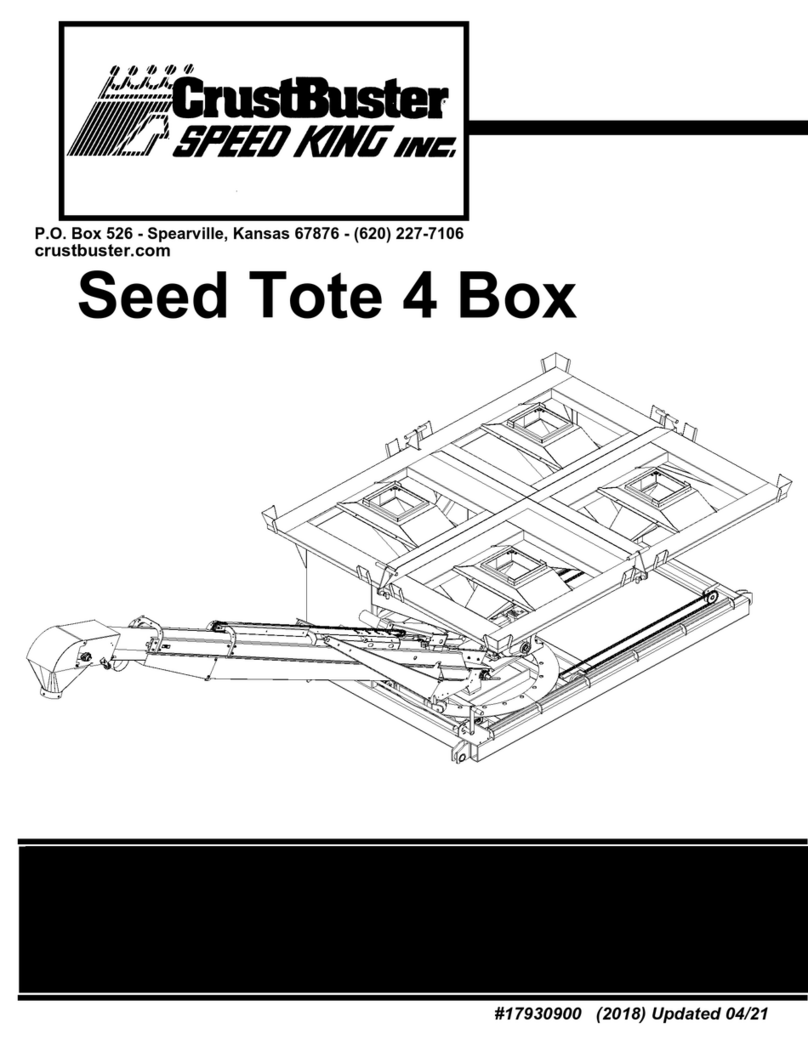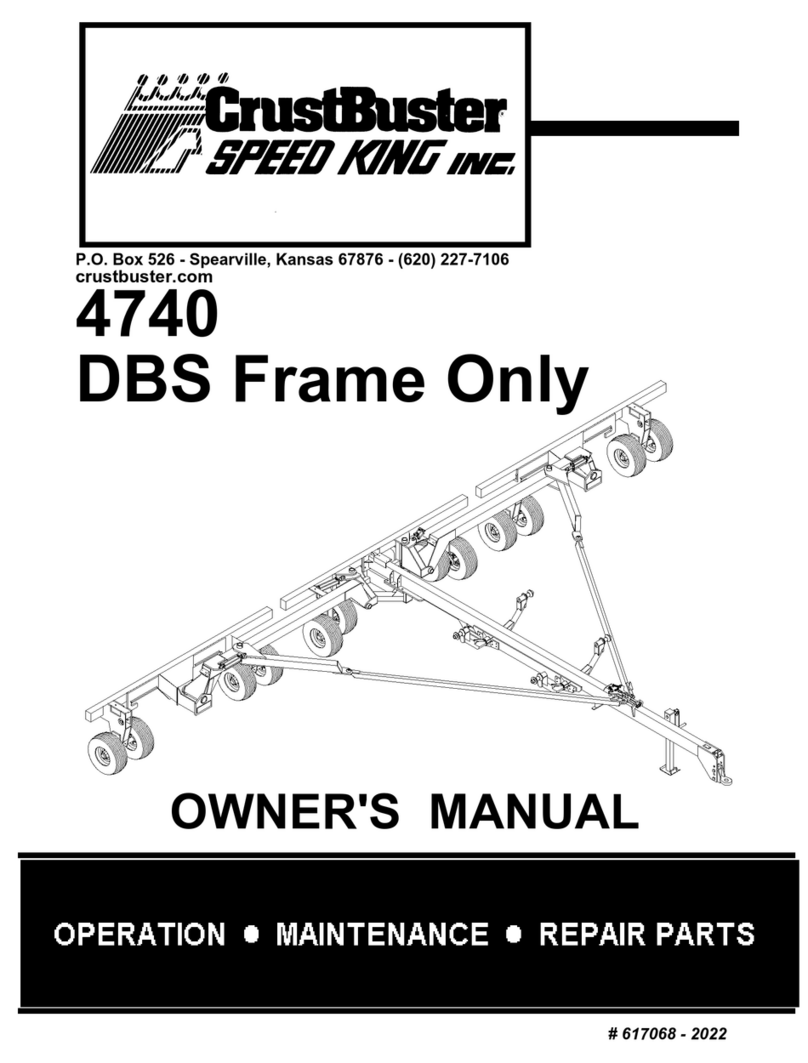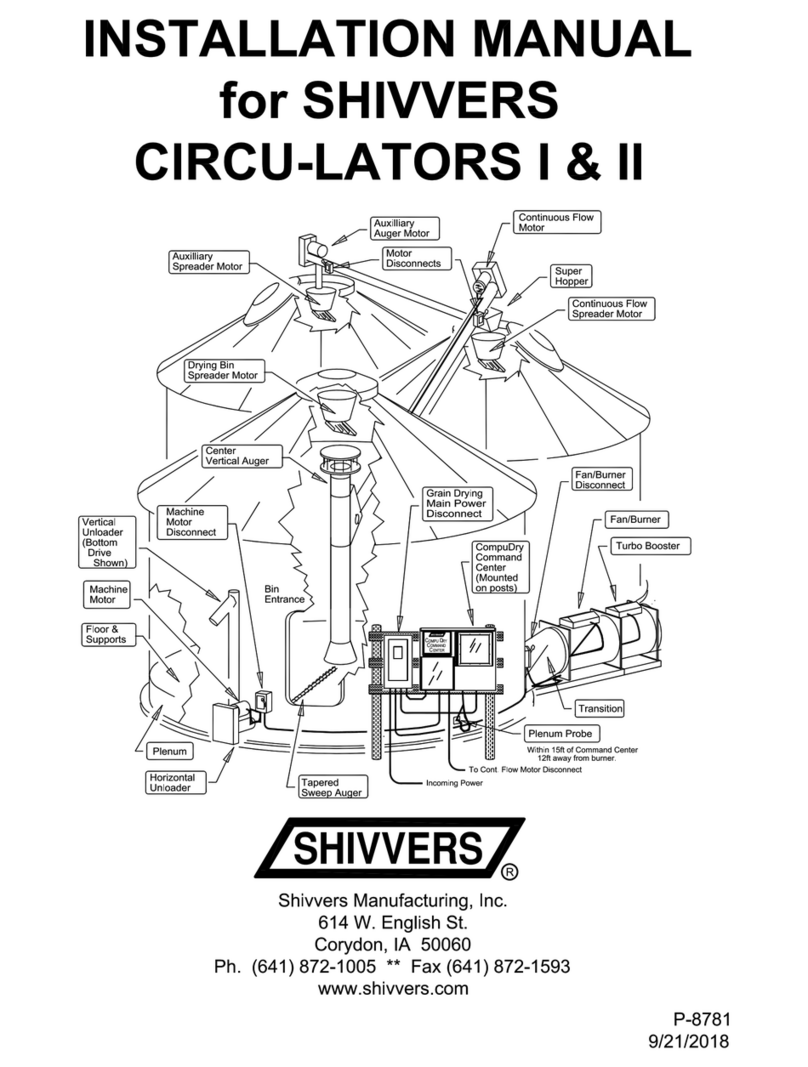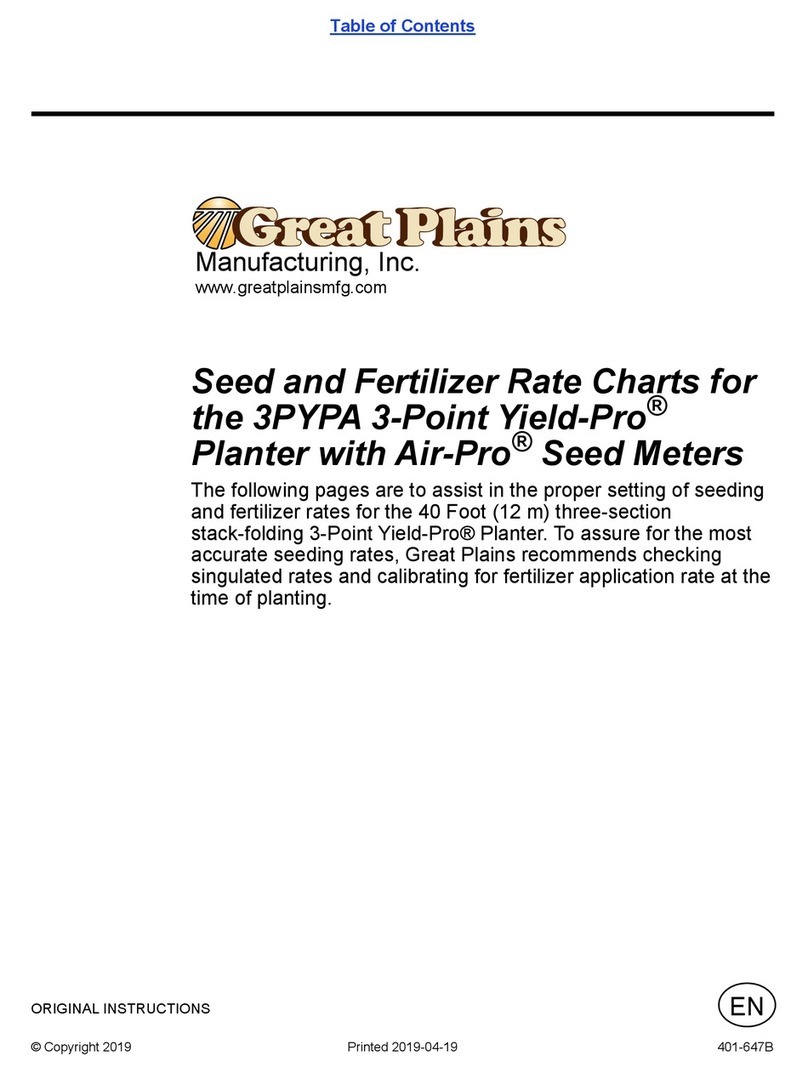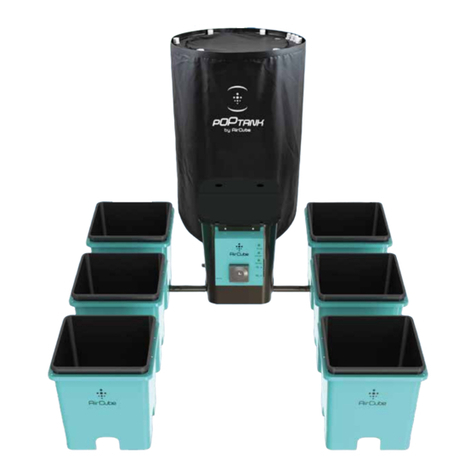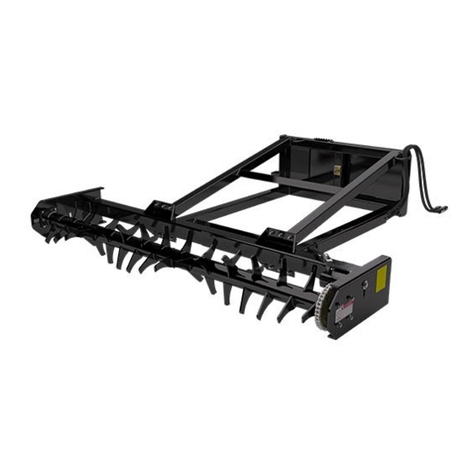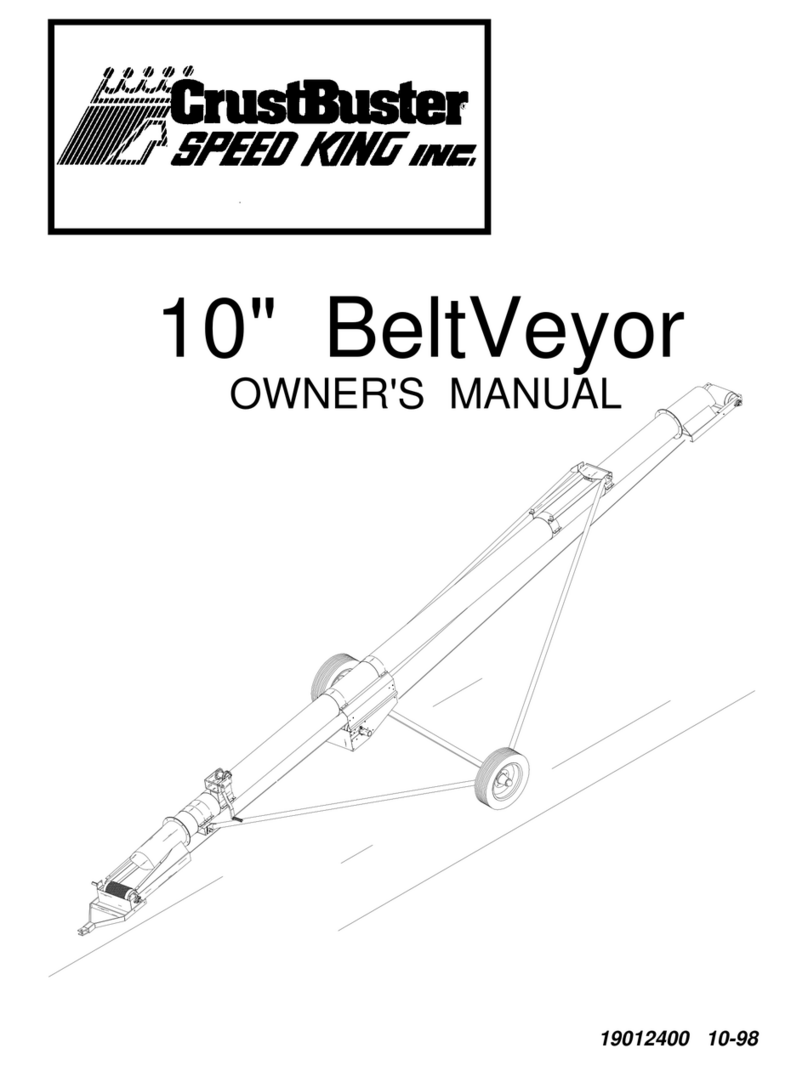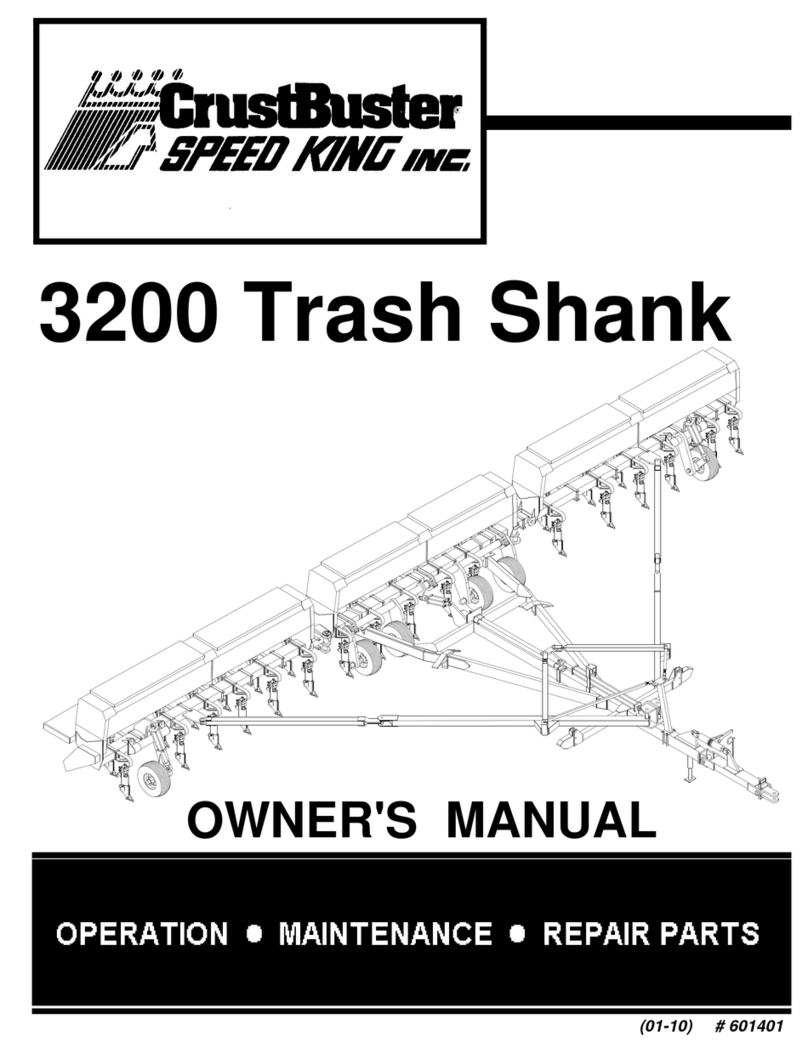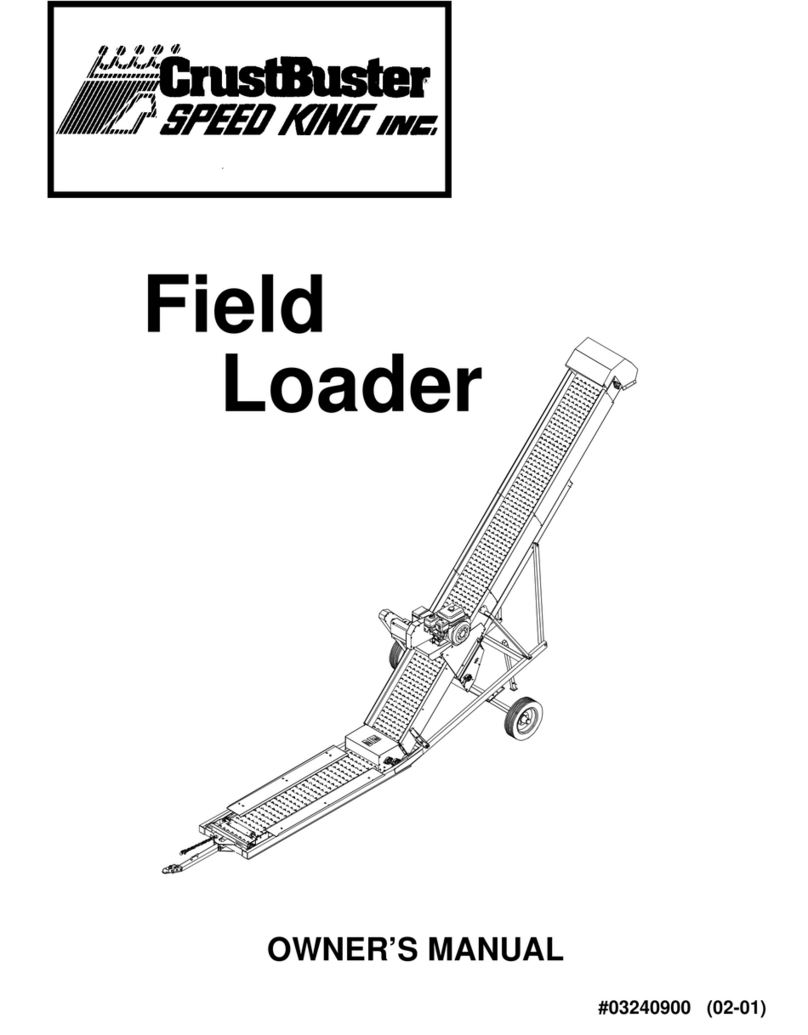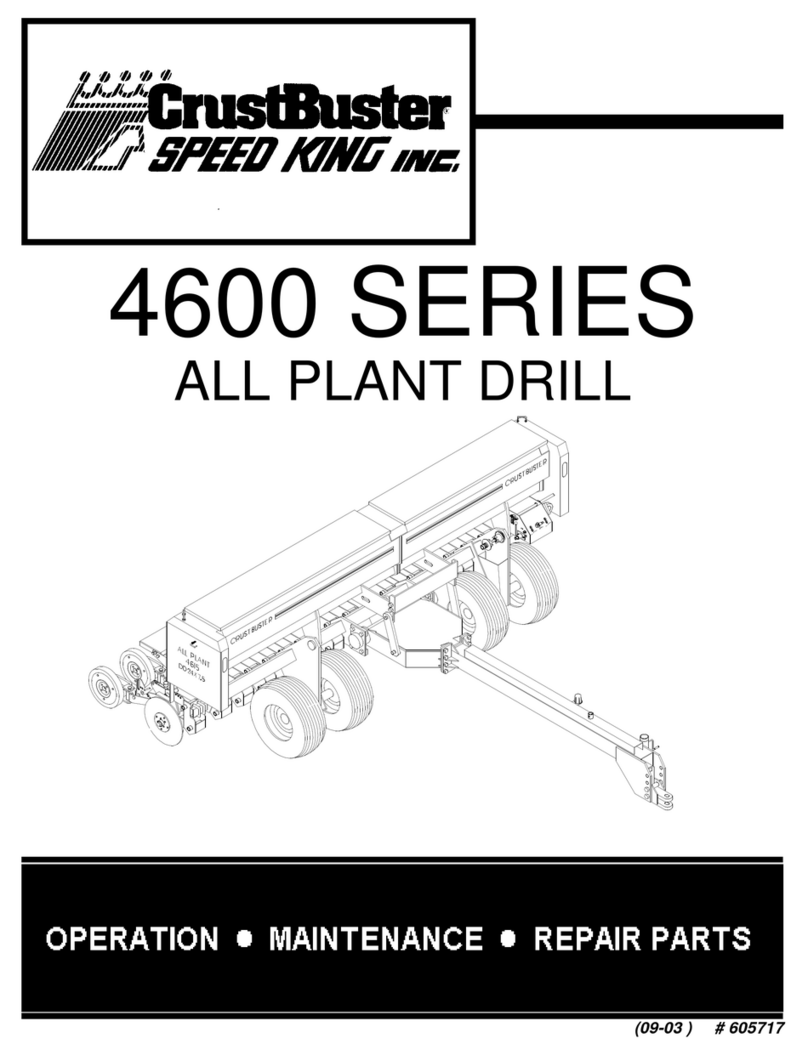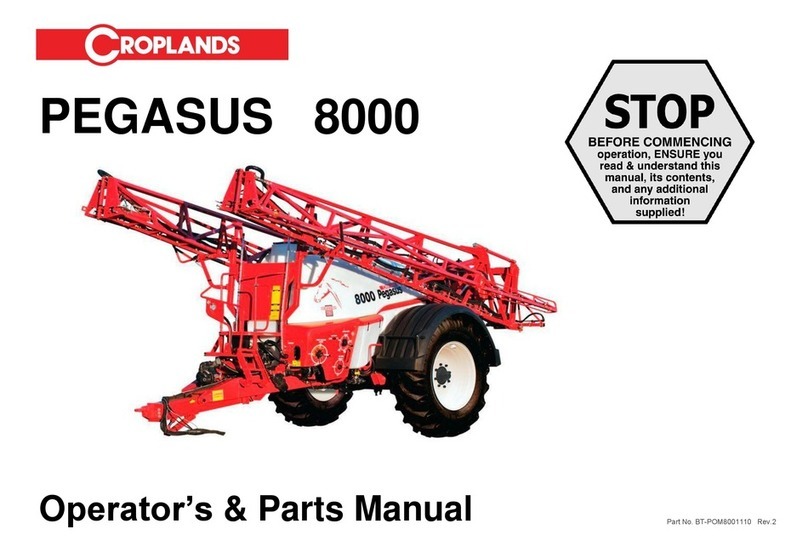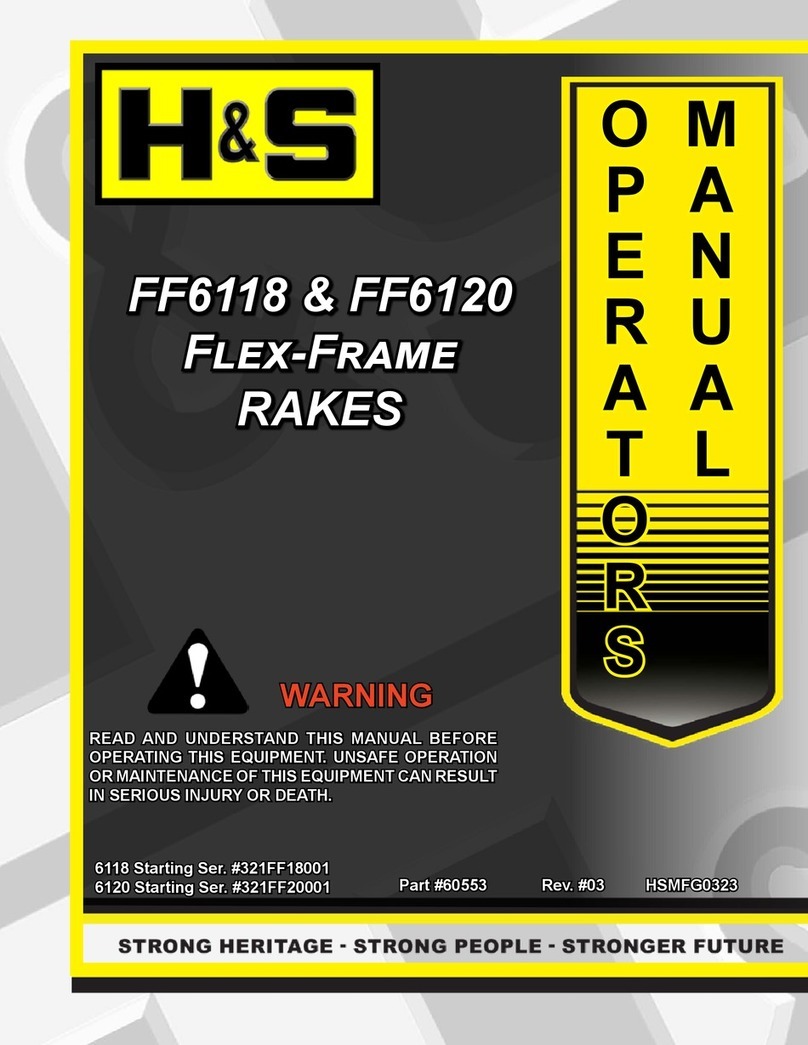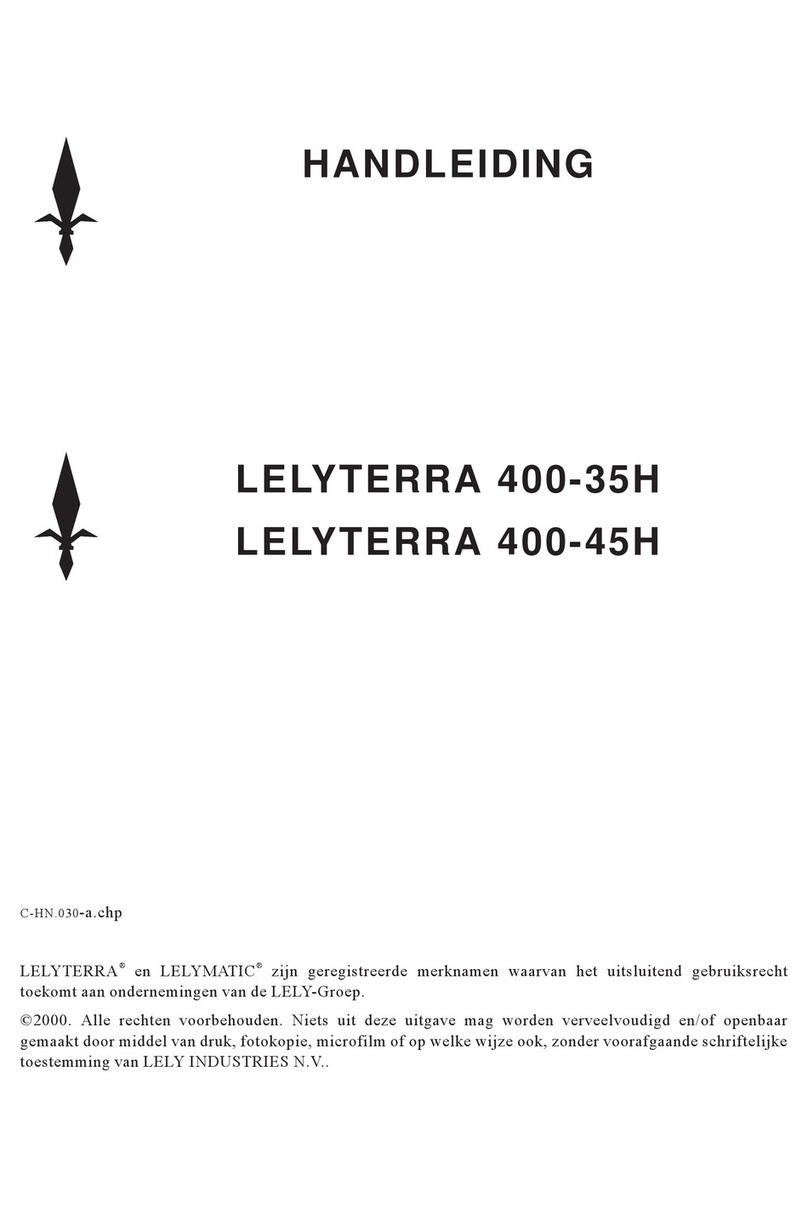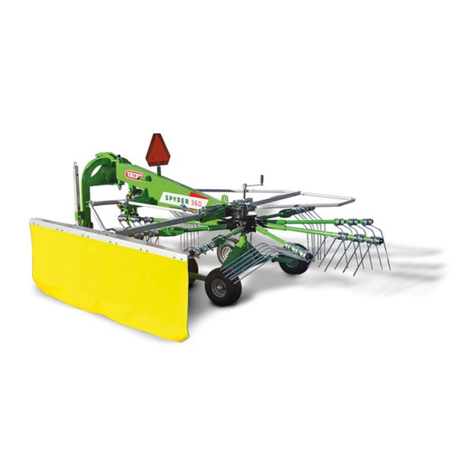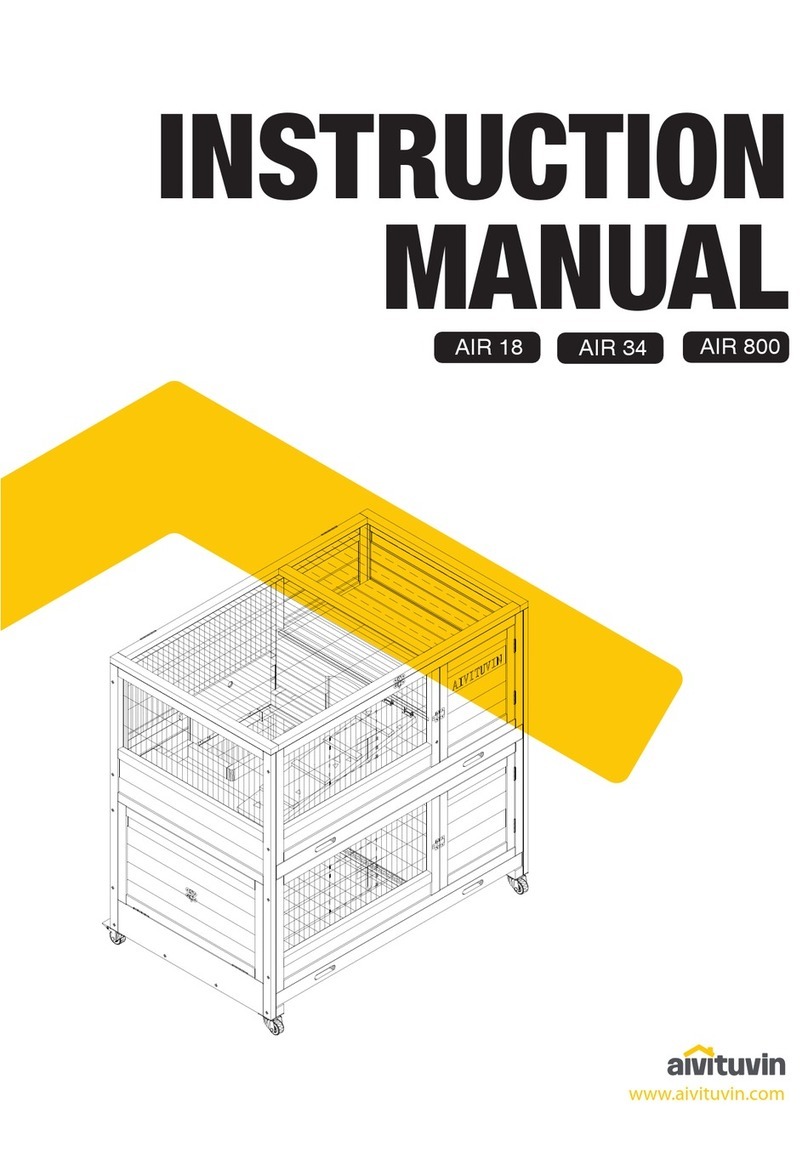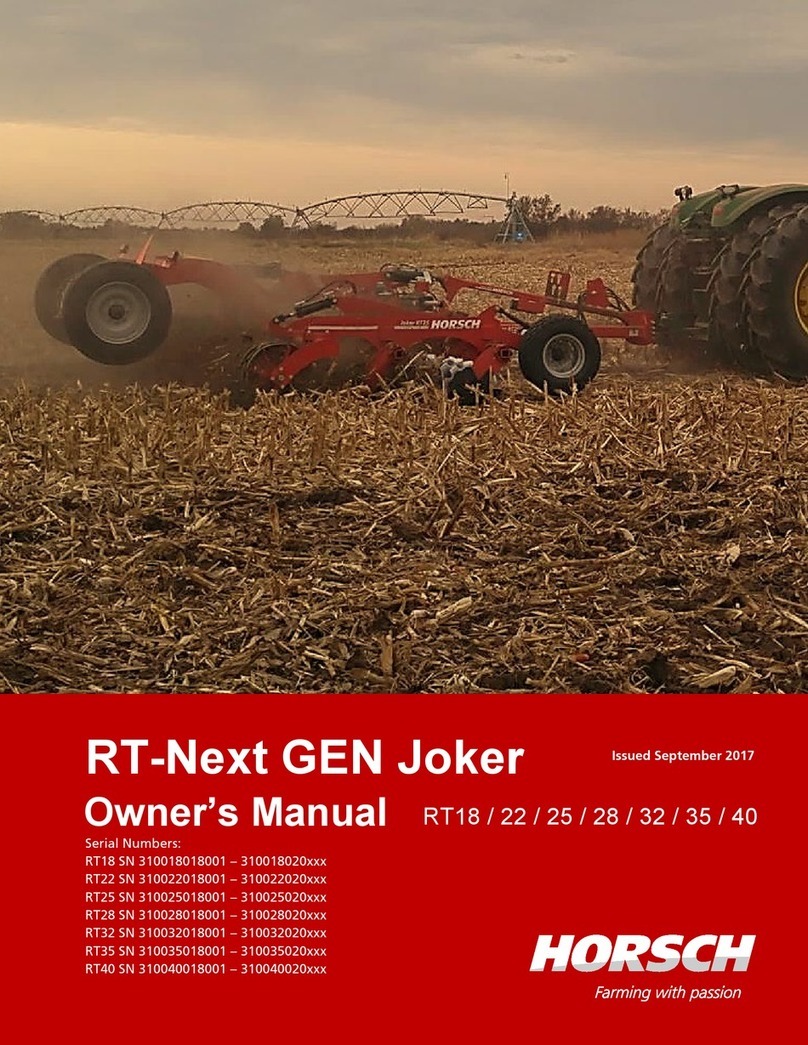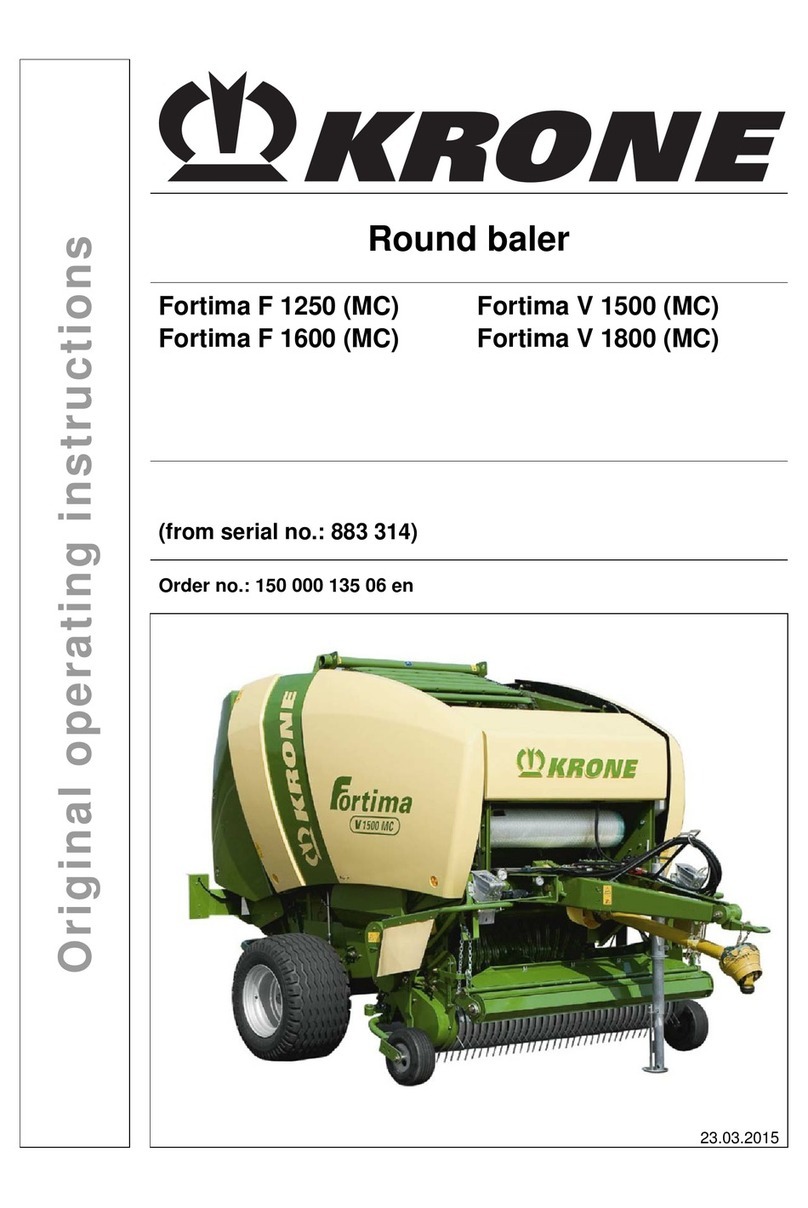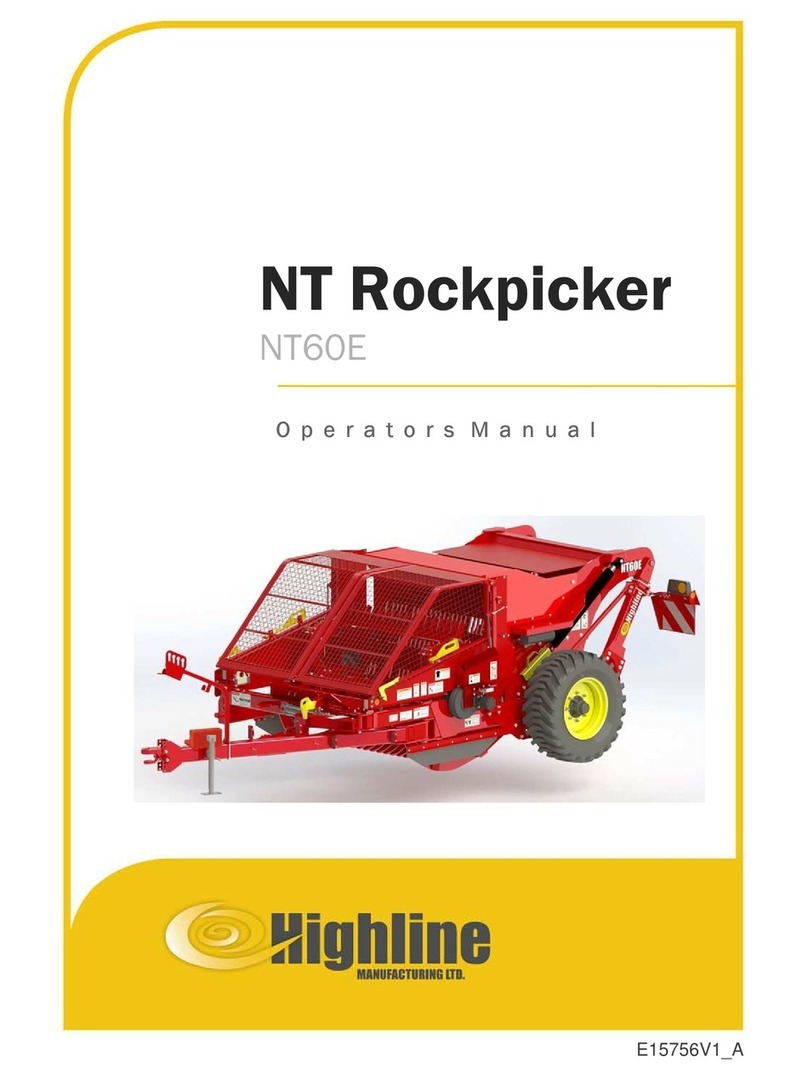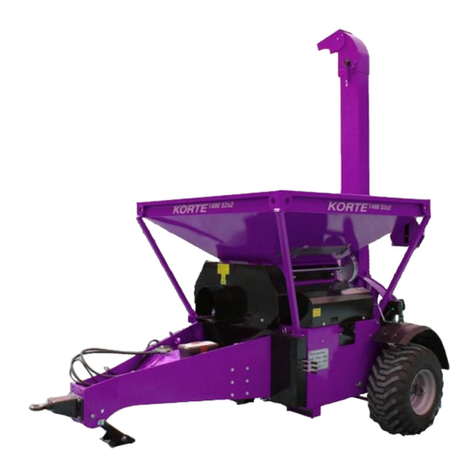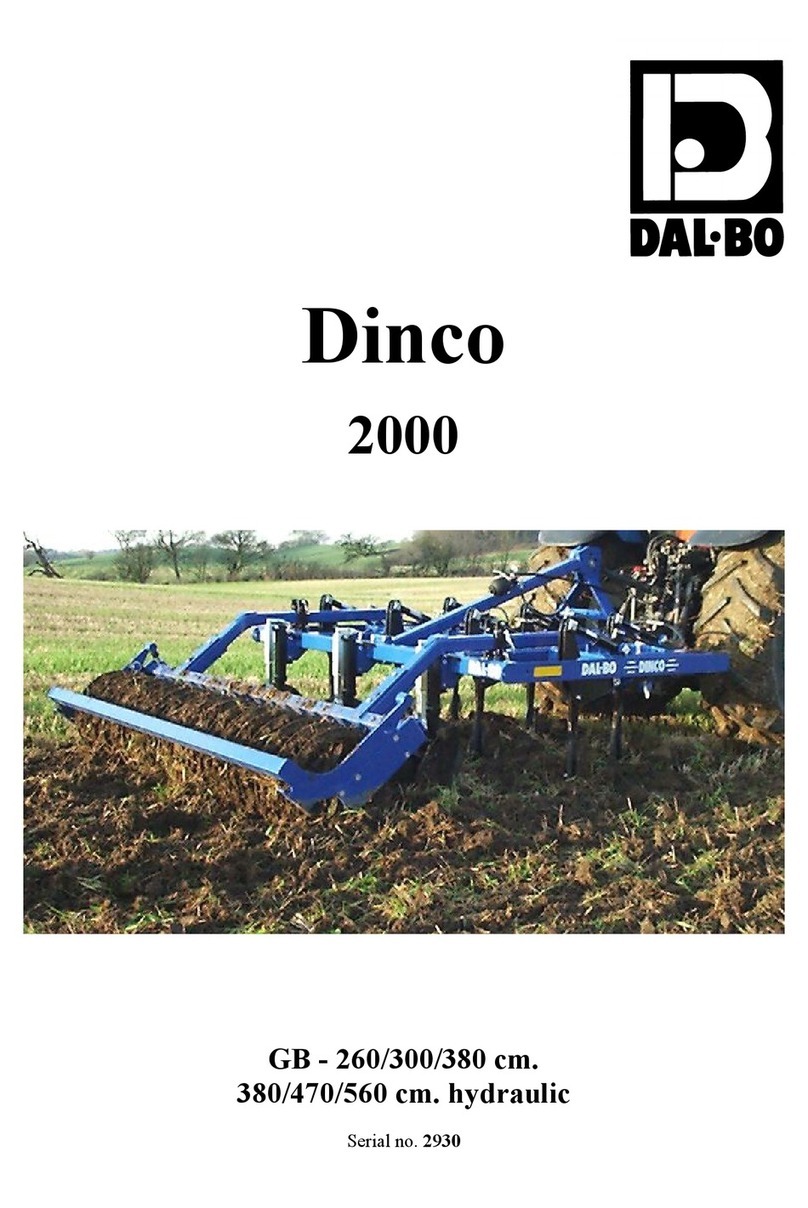
Blade Gap Adjustment
Offset blade designs form better seed furrows
and penetrate and cut in tougher planting condi-
tions. If using the ALL PLANT opener, as the
blades wear the gap between blades will
increase. Removing each blade from the opener
bracket allows the operator to take shim washers
from behind the bearing and re-adjust the blade
gap for better performance. Shim washers that
are removed must then be placed on outside of
blade to maintain length of bolt. Maintain a 1/8" to
3/16" clearance between blades, measuring at
the pinch point. Inadequate clearance will in-
crease wear on the inside of the lead blade and
mean quicker replacement. The lead blade
changes sides on the opener on each half of the
drill. The right blade on ALL PLANT openers is
installed with a right hand threaded bolt. The left
blade is installed with a left hand threaded bolt.
If the MIN-TILL opener is used, the offset design
is achieved by using a 15" leading blade and a 13"
trailing blade. One bolt and lock nut secures both
blades in the proper angle by tightening the bear-
ing races against the opener bracket. Be sure to
hold the bolt as the nut is removed or replaced.
The bolt is bent to the proper angle for the blades
to meet at the front pinch point. Since it is mount-
ed with one bolt, the MIN-TILL opener blades
require no gap at the pinch point. Shim washers
may be needed to achieve this. When tightening
blades, rotate the bent bolt until bearing races are
flat and flush against beveled surface of opener
blade bracket.
ALL PLANT opener shown
Tandem Wheel Drive Clutch
The tandem wheel on the center section that
drives a seed shaft is manufactured with a man-
ual throw-out type clutch.
IMPORTANT: This will need to be disengaged
before road transport.
On the wing sections, tandem wheels that drive a
seed shaft are manufactured with a friction disc
type clutch. If the drive wheel encounters a hole,
ridge, or other situation that may cause a delay in
adequate ground contact, the other wheel will "take
over" driving the seed shaft. During turns, or in the
folding operation, it is necessary the non-drive
wheel can free wheel.
The tire is bolted to the hub using three tap bolts
with tapered wheel nuts and three wheel bolts.
The three tap bolts also bolt on the clutch drive
plate to the backside of the hub. If the wheel must
be removed for service, remove ONLY the three
tapered wheel nuts and three wheel bolts. Pres-
sure on the two friction discs has been factory set.
As drill is used, this may have to be adjusted. This
is done by tightening the four nylock lock nuts and
compressing the four rubber springs to the desired
pressure for wheel slippage. This must be done
with equal pressure on all four springs. DO NOT
over tighten the four rubber spring bolts, as this will
cause damage to the tire and wheel assembly, and
the clutch housing.
CAUTION!
At the start of a new drilling season, or anytime the
drill is going to be used, especially if the drill has
been stored out in the weather all winter long,
make sure the clutch drive is not frozen up.
Failure to do this will result in damage to the clutch
assembly.
To make sure the clutch is not frozen up, loosen
up the clutch bolts. This should free the disc
torque limiter. If not, use a knife to free the torque
limiter from one or the other. Reset clutch back to
where it was. Do Not use any oil or penetrating oil
of any kind.
ENGAGED DISENGAGED
CENTER DRIVE CLUTCH
WING DRIVE CLUTCH
15




















